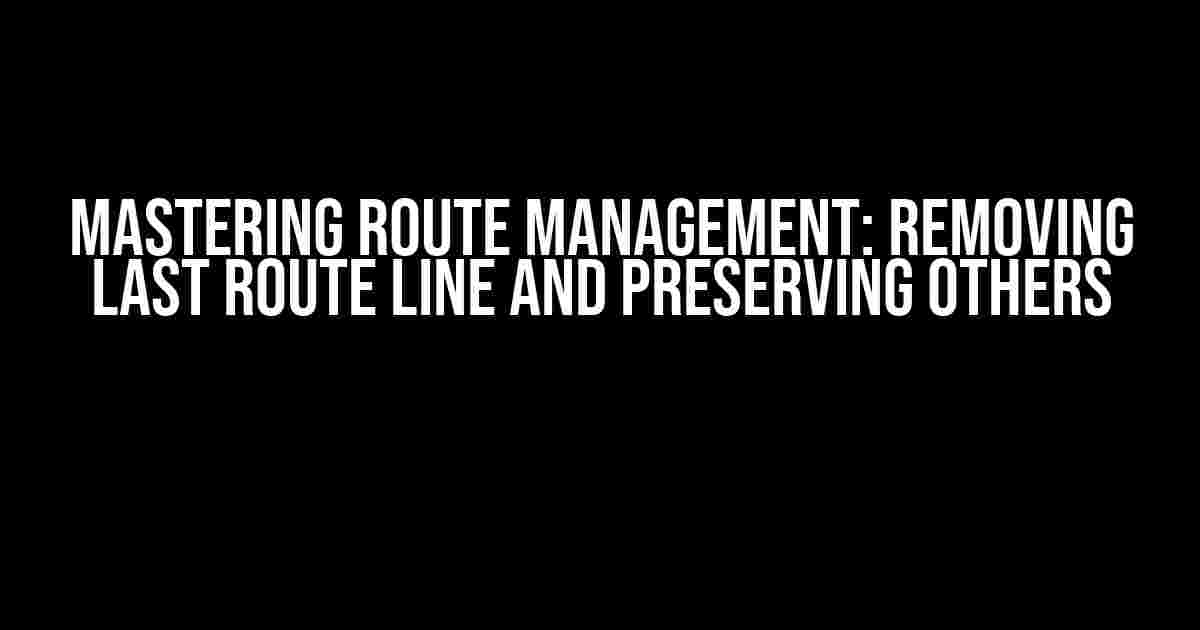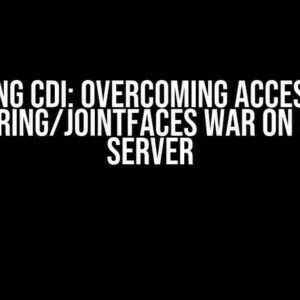Are you tired of dealing with route lines that refuse to disappear even after unchecking all vehicles? Do you struggle to maintain a clean and organized map view when working with multiple vehicles? Worry no more! In this comprehensive guide, we’ll delve into the world of route management and explore the solution to removing the last route line when checking multiple vehicles, ensuring that other route lines remain intact even after unchecking all vehicles.
Understanding the Problem
When working with multiple vehicles and routes, it’s essential to have a clear and organized map view. However, when checking multiple vehicles, the last route line can become a nuisance, cluttering the map and making it difficult to focus on the relevant information. Moreover, when unchecking all vehicles, it’s frustrating to see the other route lines still drawn on the map, occupying valuable space and causing visual clutter.
This issue arises due to the way route lines are typically handled in mapping applications. When multiple vehicles are checked, the last route line is often treated as the primary or most recent route, making it difficult to remove without affecting the entire route system. To combat this, we’ll explore a range of solutions and best practices to help you regain control over your map view.
Solution 1: Using Conditional Statements
One approach to removing the last route line is to employ conditional statements within your code. This involves creating a logical test to determine whether a vehicle is checked or not, and subsequently, whether the corresponding route line should be displayed or removed.
if (vehicle.isChecked()) {
// Draw route line for checked vehicle
routeLine.setVisible(true);
} else {
// Remove route line for unchecked vehicle
routeLine.setVisible(false);
}
In this example, we’re using a simple `if-else` statement to toggle the visibility of the route line based on the checked state of the vehicle. When the vehicle is checked, the route line is displayed, and when it’s unchecked, the route line is removed.
Solution 2: Utilizing Route Line Arrays
Another approach is to use arrays to manage route lines. By storing route lines in an array, you can easily iterate through the array and remove the last route line when multiple vehicles are checked.
// Create an array to store route lines
var routeLines = [];
// Loop through checked vehicles and add route lines to array
for (var i = 0; i < vehicles.length; i++) {
if (vehicles[i].isChecked()) {
routeLines.push(drawRouteLine(vehicles[i]));
}
}
// Remove the last route line from the array
routeLines.pop();
In this example, we’re creating an array `routeLines` to store the route lines corresponding to checked vehicles. We then iterate through the array and remove the last element using the `pop()` method, effectively removing the last route line.
Solution 3: Implementing a Custom Route Manager
A more advanced approach is to create a custom route manager class that encapsulates the logic for managing route lines. This allows you to decouple the route line management from the vehicle checking logic, making it easier to maintain and update.
class RouteManager {
constructor() {
this.routeLines = [];
}
addRouteLine(vehicle) {
if (vehicle.isChecked()) {
this.routeLines.push(drawRouteLine(vehicle));
}
}
removeLastRouteLine() {
this.routeLines.pop();
}
removeAllRouteLines() {
this.routeLines = [];
}
}
In this example, we’re defining a `RouteManager` class that manages an array of route lines. The `addRouteLine` method adds a route line to the array when a vehicle is checked, while the `removeLastRouteLine` method removes the last route line from the array. The `removeAllRouteLines` method clears the entire array, allowing you to start from scratch.
Best Practices for Route Management
When working with route management, it’s essential to follow best practices to ensure a clean and organized map view. Here are some tips to keep in mind:
- Use a consistent naming convention for route lines and vehicles: This helps to avoid confusion and makes it easier to identify and manage route lines.
- Implement a clear and concise route line drawing logic: Ensure that your route line drawing logic is efficient and easy to understand, making it easier to maintain and update.
- Use arrays or collections to manage route lines: Storing route lines in an array or collection makes it easier to iterate through and manage them.
- Decouple route line management from vehicle checking logic: By separating the route line management from the vehicle checking logic, you can maintain a more modular and scalable codebase.
Common Pitfalls to Avoid
When implementing route management solutions, it’s easy to fall into common pitfalls that can lead to errors and inconsistencies. Here are some common mistakes to avoid:
- Not clearing the map view when unchecking all vehicles: Failing to clear the map view can lead to a cluttered and confusing interface, making it difficult for users to understand the route information.
- Not handling multiple vehicles correctly: Inadequately handling multiple vehicles can result in incorrect or incomplete route information, leading to user frustration and confusion.
- Not separating route line management from vehicle checking logic: Failing to decouple the route line management from the vehicle checking logic can lead to a tightly coupled codebase, making it difficult to maintain and update.
Conclusion
In conclusion, removing the last route line when checking multiple vehicles and preserving other route lines is a crucial aspect of route management. By employing conditional statements, utilizing route line arrays, and implementing a custom route manager, you can regain control over your map view and create a more organized and user-friendly experience. Remember to follow best practices, avoid common pitfalls, and stay flexible and adaptable when working with route management solutions.
| Solution | Description |
|---|---|
| Conditional Statements | Use if-else statements to toggle route line visibility based on vehicle checked state |
| Route Line Arrays | Store route lines in an array and remove the last element when unchecking all vehicles |
| Custom Route Manager | Implement a custom route manager class to encapsulate route line management logic |
By mastering route management and implementing the solutions outlined in this guide, you’ll be able to create a more efficient, organized, and user-friendly mapping experience for your users.
Frequently Asked Question
Having trouble with multiple vehicles and route lines on your map? We’ve got you covered! Check out our FAQs below for some clarity.
Why do some route lines remain on the map after I uncheck all vehicles?
This is a known issue that occurs when you check multiple vehicles, and then uncheck them all. It’s like the map is holding onto the last route line for dear life! Don’t worry, our dev team is working on a fix. In the meantime, try reloading the page or zooming in/out of the map to refresh the view.
How do I remove the last route line when I’ve unchecked all vehicles?
Unfortunately, there’s no magic button to remove the last route line just yet. However, you can try the workaround mentioned above or wait for our upcoming update, which will resolve this issue.
Is this issue specific to certain browsers or devices?
We’ve seen this issue occur across various browsers and devices, so it’s not specific to any particular one. It’s more of a mapping conundrum that we’re working to resolve.
Will this issue affect my vehicle routing or scheduling?
Nope! This issue is purely visual, and it won’t impact your vehicle routing or scheduling in any way. You can still plan and optimize your routes as usual.
When can I expect a fix for this issue?
Our dev team is working diligently to resolve this issue, and we expect to roll out a fix in our upcoming update. Stay tuned for further announcements, and thank you for your patience!



